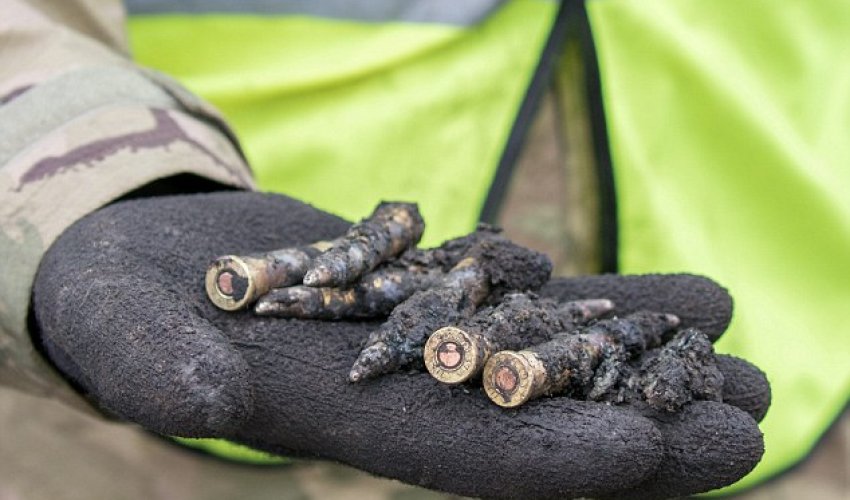Archaeologists uncover precious items from plane that crashed during World War II

From engine parts to a personalised cigarette case, these are some of the precious items that archaeologists have uncovered while digging up a Spitfire that crashed during World War Two.
The wreckage of the Mark 1A Spitfire had laid buried six feet under a field near Peterborough, Cambridgeshire, for 75 years after the plane plummeted to the ground during a training flight.
But on Monday, experts began excavating the site of the 1940 crash in a bid to recover parts from the peat before the agricultural landscape is restored to wetland as part of a conservation project.
Six days on, they have discovered an array of items, including the plane's starter motor, cockpit control panels, part of its oxygen system, and the entire remains of one of its fuel tanks.
They have also unearthed parts of the Spitfire X4583's Merlin engine, a well-preserved rubber head-rest, and parts of the aircraft's wing at the excavation site near Holme Lode Farm in Holme.
Meanwhile, a watch and a golden cigarette case bearing the letters 'HEP' - the initials of pilot officer Harold Edwin Penketh, 20, who died in the crash on November 22, 1940 - have been discovered.
Matthew Lodge, 39, took photos of the historic items while volunteering at the Great Fen project.
He revealed how work was halted this week when a bone fragment - believed to belong to Mr Penketh, whose body was recovered from the plane shortly after it crashed - was found at the site.
Mr Lodge, from Yaxley, Cambridgeshire, said: 'It was really very interesting from the moment they turned the field from a small hole to finding bits of the plane.
'It's really quite poignant and we had a real spitfire fly by as the team were working on the site. I was there at the propeller extraction, it was great as it's the most recognisable bit that came out.
'It was amazing to take photos of his cigarette case which had his initials on.
'They also found his watch.'
Permission to resume the excavation was granted by a coroner on Thursday.
Archaeologists dug two meters down and found the original excavation site for the recovery of the pilot's body by RAF Wittering seven decades ago, which took an entire week at the time.
Earlier this week, Oxford Archaeology East senior project manager Stephen Macaulay, who is overseeing the dig, said: 'We've already found artefacts with an awful lot of significance.
'As well as parts of the aircraft like bullets and cockpit fragments, we're also finding remains of the original recovery exercise including china plates the RAF personnel who recovered the pilot's body would have eaten their food from.
'"We're in deep peat and it's very wet, and while that may present itself as a problem it is also a benefit, because the plane sunk into the ground and didn't blow up and disintegrate on impact the way it might otherwise have done.'
The Spitfire is believed to have plummeted vertically into the ground at high speed after suffering an oxygen system failure or another physical failure. While Mr Penketh's body was recovered and buried in his home town of Brighton, the remains of the plane were left to vanish into the peat.
Geophysical surveying by Cranfield University pinpointed the site of the wreckage.
As the dig concluded on Friday, an RAF salute was performed.
A flag was also placed in the hole in remembrance of Mr Penketh.
The hole will now be filled in, and the land will be turned into natural habitat to link up remaining fragments of fenland and create a 14-square-mile Great Fen landscape.
(dailymail.co.uk)





www.ann.az
Similar news
Similar news
Latest news 
More news 



































 Photo
Photo 



 Video
Video 

